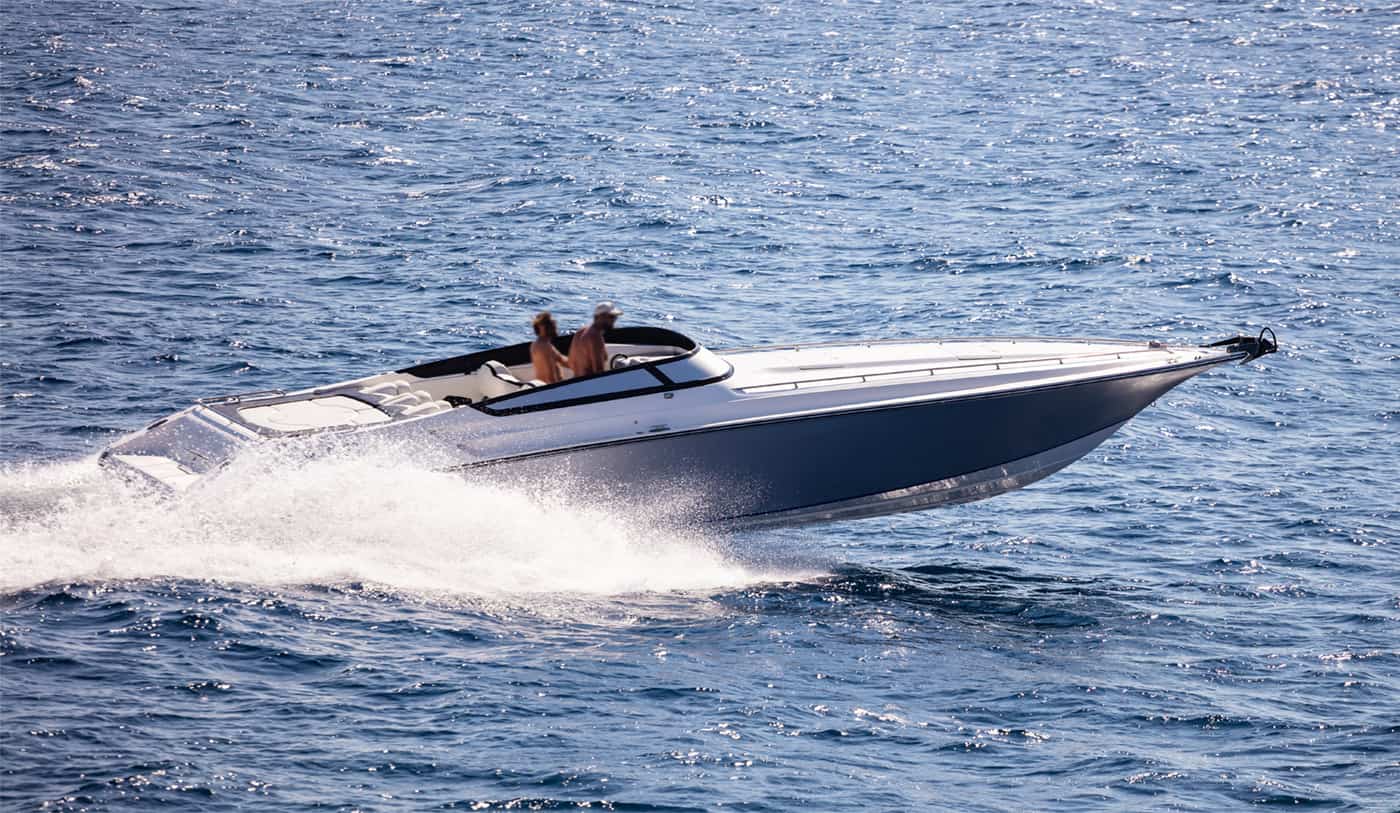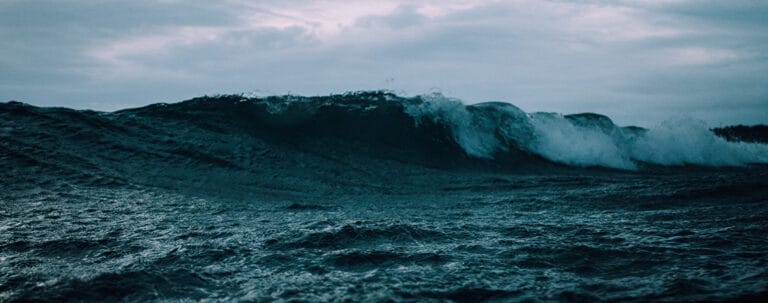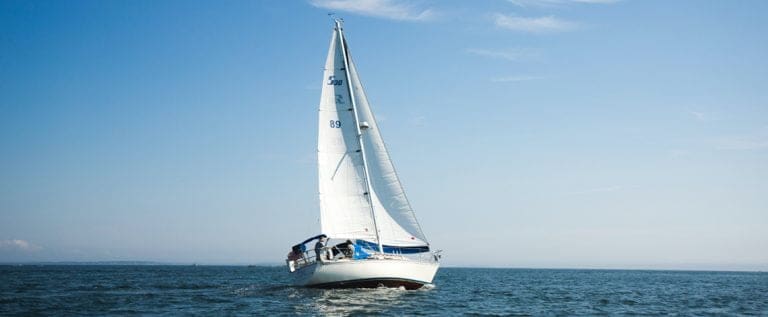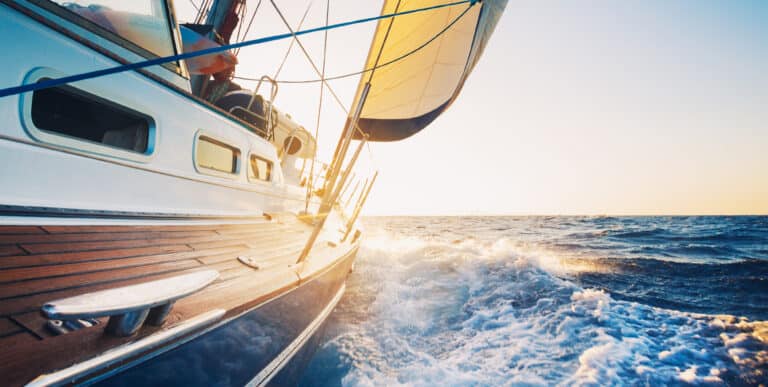The hull is the portion of your boat that rides both in and on top of the water.
There are no masts, sails, rigging, or any machinery or equipment attached to the hull.
This is the part of the boat that does all the work to allow a boat to do what it does; float and carry people across the water.
Aside from multi-hulls there are only really three main types of hull; planing, flat-bottom, and displacement.
Today we want to look at planing hulls, and what boats generally have this type of hull, and why.
What makes a planing hull useful, why is it fitted to certain boats and why is it not fitted to others.
What is a planing hull?
Boats that have planing hulls are generally designed to rise upward and glide on top of the water when there is enough power supplied by the engine.
These boats may operate similar to displacement hulls when they are at rest or at very low speeds, but they climb toward the surface of the water as they move faster.
Picture a speed boat, and how its nose raises up above the water as it glides across the surface, this is a brilliant example of a planing hull and what it does.
Boats that have planing hulls can skim across the water surface at high speeds, almost riding on top of the water instead of pushing it aside like a displacement hull does.
Flat-bottomed and V-bottomed hull shapes act similarly to planing hulls, most small power-driven vessels, including personal watercraft, and a few sail boats will have planing hulls, which allows them to travel with greater speed across the waters surface.
A lot of powerboats will have a planing hull, these boats will act like displacement hulls when they are at lower speeds, however once they hit around 15-16 miles per hour, they will usually pop up into a plane, although this depends on the design and the load.
Planing hulls actually do come in a variety of shapes and sizes, each will have benefits and disadvantages.
Boats likely to have a planing hull
The boats that are most likely to have a planing hull are boats that travel at speed, this includes personal watercraft and powerboats.
These boats have this type of hull as it will lift the boat up as it goes at high speeds, so the boat does not swim through the water as much as it surfs it.
It reduces the amount of hull in the water which minimizes the resistances and allows the boat to travel much faster.
This is why speed boats travel so much faster than other boats and why boats that have a planing hull tend to have more water sport, or recreational uses.
Planing hulls can come in different forms, each form will give it different handling characteristics, generally most you will notice will have a ‘V’ shape, with a chine in it.
This will push the water downward and add to the lift that is required for that extra speed.
A V shaped hull, which you will likely recognize from speed boats will often give it a soft ride in choppy waters, although you may find you need more power going to get her started up.
A narrow and shallow ‘V’ will require less power to start up but will not be as comfortable in bigger, choppier waters.
There are more and more deep ‘V’ hulls appearing now in faster boats, this is where the hull will flatten off toward the rear end of the boat.
This is a great feature for early planing however it will not be as pleasant in waves and choppy waters.
Powerboats
A powerboat is often referred to as a motorboat or a speedboat, this is a boat that is powered by an engine, rather than by wind and sails.
A lot of these boats are often fitted with inboard engines (tell here if your engine is cracked), others will have an outboard motor installed on the rear.
Some powerboats have a hybrid outboard engine as well.
There is no defining size of a powerboat, they can be any size, as is with any type of water craft though, the boater should take a safety course before they venture out onto the water.
A few types of boats you may not know where powerboats are as follows; bass boat, bow rider, cuddy cabin, deck boats, jet boat, power catamaran, skiffs, and walkarounds.
Personal Water Crafts
A personal watercraft is also known as a PWC (see what happens when you cross paths with a sailboat). It is a small pleasure craft that uses an inboard jet drive as the primary source of power and propulsion.
It is designed to be operated by a person or multiple people who are sitting, standing, or in some cases, kneeling on the craft, rather than inside it like you would with a standard boat or power craft.
To simplify, you may recognize personal watercraft more under the name jet ski, as these are very much similar.
These do have a planing hull, which is very noticeable if you have ever seen someone ride one, or ridden one yourself.
Other types of hull and which boats have them
As well as planing hulls, there are a few other types of hulls that boats can have.
Even some of the fastest boats do not always have a planing hull some may have other hulls while still being rather speedy.
- Displacement hulls – Displacement hulls are often seen on trawlers and sailboats.
They are slower moving but are also rather steady and are very capable of carrying excessive amounts with relatively small propulsion units.
- Flat Bottom hulls – Flat bottomed boats are stable and can carry heavy loads, they do not need a large engine to plane but can be a wet and rough ride in chop or unpleasant weather.
Aluminum or fiberglass bay and fishing boats tend to have flat hulls, as they have a shallow draft and a decent amount of deck space.




